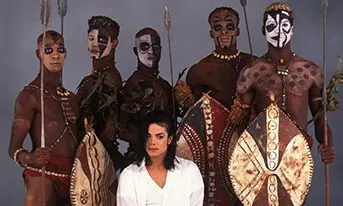Anglais 1re
Rejoignez la communauté !
Co-construisez les ressources dont vous avez besoin et partagez votre expertise pédagogique.
Mes Pages
1. Identities and Exchanges
Ch. 1
In and out of the Valley
Ch. 2
Nollywood and Bollywood
2. Public and private spaces
Ch. 3
Women of power
Ch. 4
Better together
3. Art and power
Ch. 5
Uncle Stan’s army
Ch. A
The colors of music - Digital content only
Ch. num
Artjacking!
4. Citizenship and virtual worlds
Ch. 6
Hacktivism
Ch. 7
Fact or fiction?
Ch. B
Back to the future - Digital content only
5. Fictions and realities
Ch. 8
Got(h) away with murder
Ch. 9
The West wind
Ch. C
From Britain with laughs - Digital content only
6. Scientific innovations and responsibility
Ch. 10
The big smoke
Ch. 11
Is it a brave new world?
7. Diversity and inclusion
Ch. 12
The secret road to freedom
Ch. 13
Caribbean poetry
8. Territory and memory
Ch. 14
No thanks, no giving
Ch. 15
Troubled times
Ch. num
The Blues Highway
Fiches méthode
Précis
Précis de communication
Précis phonologique
Précis grammatical
Précis culturel
Annexes
Verbes irréguliers
Rabats
Révisions
Unit A
Bac
Exam file
Ressource affichée de l'autre côté.
Faites défiler pour voir la suite.
Faites défiler pour voir la suite.
Épreuve d'expression écrite avec :
- compréhension orale 1h
- compréhension écrite 1h30
- compréhension orale 1h
- compréhension écrite 1h30
Ressource affichée de l'autre côté.
Faites défiler pour voir la suite.
Faites défiler pour voir la suite.
Compréhension de l'oral Interview of Michael Jackson
Avant d'écouter → Lisez le titre ci-dessus et regardez le nuage de mots.

Michael Jackson, Where Are They Now, OWN, 1993
1
Quel peut être le thème de cet enregistrement ? Faites trois hypothèses.
Astuce : vous pouvez vous aider du nuage de mots.
2
Trouvez cinq autres mots que vous pourriez entendre dans l'enregistrement.
3
a. Trouvez cinq autres mots que vous pourriez entendre dans l'enregistrement.
b. Prenez en note tous les noms propres. À quoi / qui font-ils référence ?
4
Utilisez vos notes pour répondre à des questions simples.
a. De quel type de document s'agit-il ? D'où vient-il ?
b. Combien de personnes sont présentes ? Qui sont-elles ?
c. Quel est le thème de l'enregistrement ?
5
Apportez des précisions sur ce qui est présenté.
6
Avec l'aide de vos réponses aux questions précédentes, rendez compte de l'enregistrement en français.
Ressource affichée de l'autre côté.
Faites défiler pour voir la suite.
Faites défiler pour voir la suite.
Expression écrite
Choisissez un sujet et répondez-y en anglais en 120 mots.
Post your reaction to the article: explain how you interpret the controversy (focus on the symbols, analyse the context of 1991 and connect it to recent events in America).
“You can't copy anything and end with anything. It means you're working without real feeling. No two people on earth are alike, it's got to be that way in music or it isn't music.”
Discuss this statement.
Write an article reporting the interview. What does this controversy reveal about the issue of skin colour in the US?
Sujet A - Texte
Post your reaction to the article: explain how you interpret the controversy (focus on the symbols, analyse the context of 1991 and connect it to recent events in America).
Sujet B - Texte - Vidéo
“You can't copy anything and end with anything. It means you're working without real feeling. No two people on earth are alike, it's got to be that way in music or it isn't music.”
Discuss this statement.
Sujet C - Vidéo
Write an article reporting the interview. What does this controversy reveal about the issue of skin colour in the US?
Ressource affichée de l'autre côté.
Faites défiler pour voir la suite.
Faites défiler pour voir la suite.
Ressource affichée de l'autre côté.
Faites défiler pour voir la suite.
Faites défiler pour voir la suite.
Compréhension de l'écrit
Black and White: how Dangerous kicked off Michael Jackson's race paradox, Joseph Vogel, 2018.
For a figure as enigmatic as Michael Jackson, one of the more fascinating
paradoxes about his career is this: as he became whiter, he became blacker. Or to
put it another way: as his skin became whiter, his work became blacker. […] Sure,
critics said, he might sing that it “don't matter if you're black or white”, but then why
had he turned himself white? Was he bleaching his skin? Was he ashamed of his
blackness? […]
In the early 1990s, the public were sceptical to say the least. Jackson first publicly revealed he had vitiligo in a widely watched 1993 interview with Oprah Winfrey. “This is the situation,” he explained. “I have a skin disorder that destroys the pigmentation of the skin. It is something I cannot help, OK? But when people make up stories that I don't want to be what I am it hurts me … It's a problem for me that I can't control.” Jackson did acknowledge having plastic surgery but said he was “horrified” that people concluded that he didn't want to be black. “I am a black American,” he declared. “I am proud of my race. I am proud of who I am.” […]
The first few minutes of the Black or White video seemed relatively benign and consistent with the utopian calls of previous songs (Can You Feel It, We Are the World, Man in the Mirror). [...] The message seemed to be that we are all part of the human family – distinct but connected – regardless of cosmetic variations.
In the age of Trump and the resurgence of white nationalism, even that multicultural message remains vital. But that's not all Jackson had to say. Just when the director (John Landis) yells “Cut!” we see a black panther lurking off the soundstage to a back alley. The coda that follows became Jackson's riskiest artistic move to this point in his career – particularly given the expectations of his “family-friendly” audience. In contrast to the upbeat, mostly optimistic tone of the main portion of the video, Jackson unleashes a flurry of unbridled rage, pain and aggression. He bashes a car in with a crowbar; he grabs and rubs himself; he grunts and screams; he throws a trash can into a storefront (echoing the controversial climax of Spike Lee's 1989 film, Do the Right Thing), before falling to his knees and tearing off his shirt.[…]
In the early 1990s, the public were sceptical to say the least. Jackson first publicly revealed he had vitiligo in a widely watched 1993 interview with Oprah Winfrey. “This is the situation,” he explained. “I have a skin disorder that destroys the pigmentation of the skin. It is something I cannot help, OK? But when people make up stories that I don't want to be what I am it hurts me … It's a problem for me that I can't control.” Jackson did acknowledge having plastic surgery but said he was “horrified” that people concluded that he didn't want to be black. “I am a black American,” he declared. “I am proud of my race. I am proud of who I am.” […]
The first few minutes of the Black or White video seemed relatively benign and consistent with the utopian calls of previous songs (Can You Feel It, We Are the World, Man in the Mirror). [...] The message seemed to be that we are all part of the human family – distinct but connected – regardless of cosmetic variations.
In the age of Trump and the resurgence of white nationalism, even that multicultural message remains vital. But that's not all Jackson had to say. Just when the director (John Landis) yells “Cut!” we see a black panther lurking off the soundstage to a back alley. The coda that follows became Jackson's riskiest artistic move to this point in his career – particularly given the expectations of his “family-friendly” audience. In contrast to the upbeat, mostly optimistic tone of the main portion of the video, Jackson unleashes a flurry of unbridled rage, pain and aggression. He bashes a car in with a crowbar; he grabs and rubs himself; he grunts and screams; he throws a trash can into a storefront (echoing the controversial climax of Spike Lee's 1989 film, Do the Right Thing), before falling to his knees and tearing off his shirt.[…]
Couched in between the Rodney King beating and the Los Angeles riots, it seems
crazy in retrospect not to interpret the short film in that context. Racial tensions in
the US, in LA in particular, were hot. In this climate, Michael Jackson – the world's
most famous black entertainer – made a short film in
which he escapes the confines of the Hollywood sound
stage, transforms into a black panther and channels
the pent-up rage and indignation of a nation and
moment. […] A few years later, he worked with Spike
Lee on the most pointed racial salvo of his career,
They Don't Care About Us, which has been resurrected
as an anthem for the Black Lives Matter movement.
Still, critics, comedians and the public alike continued
to suggest Jackson was ashamed of his race.




Ressource affichée de l'autre côté.
Faites défiler pour voir la suite.
Faites défiler pour voir la suite.
Questions
a) Where and when does the action take place?
b) What is the paradox in Michael Jackson's career?
c) How did Jackson react to the debate over the colour of his skin? What do you think of it?
d) What seems to be the message of the beginning of the video clip of Black or White?
e) What political movement the animal chosen could refer to?
f) How does the ending of the video contrast with the rest? Why?
g) What do the Rodney King beating and the LA riots refer to?
Une erreur sur la page ? Une idée à proposer ?
Nos manuels sont collaboratifs, n'hésitez pas à nous en faire part.
j'ai une idée !
Oups, une coquille
